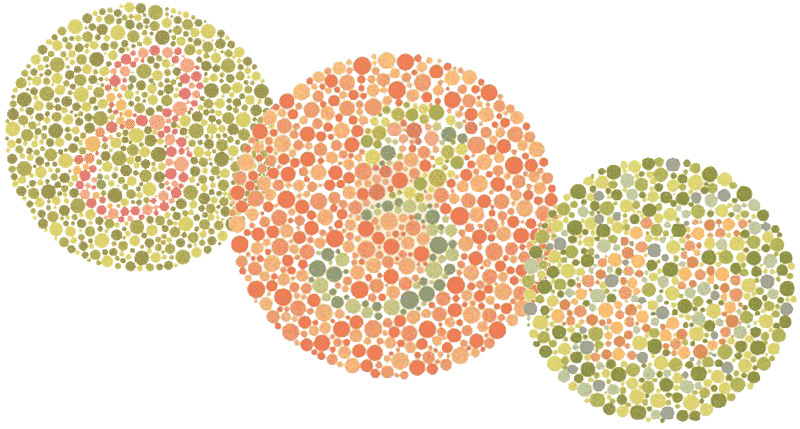Not seeing Red or Green This Season? You May Be Color Vision Deficient
For many of us, the holiday season includes festive displays of red and green. But for those with color blindness, the season takes on an entirely different hue.
THREE TYPES OF COLOR BLINDNESS
Color blindness affects one in every 12 men and one in every 200 women, but not all those who have it see things the same way. The human eye contains light-sensitive cells called photoreceptors; different photoreceptors help us see different colors.
While some people truly cannot see any colors at all, most people who identify as colorblind can still see most colors. However, some of their photoreceptors don’t work properly, so they may struggle to distinguish between certain colors or hues. When individuals can see some colors but not all, “color blindness” is more accurately known as color deficiency.
The three types of color vision deficiency are:
- Red/green color vision deficiency is by far the most common type. For these individuals, reds may appear greener, or yellows and greens may appear redder. Certain shades of red or green may appear indistinguishable from one another or may look gray, but those with red/green vision deficiency are usually able to see the rest of the color spectrum fairly well.
- Blue/yellow color deficiency is more rare. For these people, blues appear greener, and yellow hues may look reddish, violet or gray.
- True color blindness is the rarest of the three. Unlike those with color vision deficiency who can see at least a portion of the color spectrum, individuals with true color blindness have a complete inability to see colors. Those living with true color blindness often also have trouble seeing clearly and may struggle with visual acuity.
LIVING WITH COLOR VISION DEFICIENCY
While there is no cure, color vision deficiency is almost never life-threatening. Most who have the condition live completely normal lives. That said, there are some professions where color blindness or deficiency can pose additional challenges.
Some fields, including law enforcement, firefighting and the military, have restrictions or bans on hiring colorblind individuals.
Other jobs may depend on the ability to perceive colors and are therefore not ideal for those with color vision deficiency. For example, pilots may need to read color-specific safety signals; those in the medical field must be able to accurately assess physical symptoms at a glance. Electricians must distinguish between color-coded wires; interior designers have to regularly match colors; even teachers often use color-based learning tools.
But for most, the inherited disorder of color vision deficiency does not pose serious lifestyle or career restrictions. Many who have the condition are not even aware they are color deficient until later in life.
CORRECTING COLOR VISION DEFICIENCY
Because color vision deficiency is not life-threatening and rarely life-challenging, treatments for the condition are optional and patient-chosen. Many people choose to forego treatment altogether as they feel the solution is more of a hindrance than the condition itself.
If a color vision deficient person does wish to correct their vision, treatment comes in the form of specially colored filters worn either in a pair of glasses or a single contact lens. The goal is to create a difference in the wavelengths received by each eye, allowing the brain to differentiate between two colors that previously looked the same. While the patient won’t necessarily see colors as someone without color blindness would, colored lenses offer an effective workaround when the need arises.
However, most color deficient individuals rarely bother with color-corrective eyewear, preferring to use cues other than color to guide them. For example, knowing that most stoplights are arranged with the red light on top and green on the bottom allows those with color deficiency to follow traffic signals without being able to see the precise red and green shades. Furthermore, advances in technology offer workarounds in the form of intelligent color-matching programs or smartphone apps to help with color-based activities, such as selecting ripe fruits or matching clothing to make outfits.
With plenty of tools available to address altered color perception, color blindness is rarely cause for worry. Instead, color vision deficiency simply provides an alternate way of viewing the world, especially during the red-and-green holiday season.

